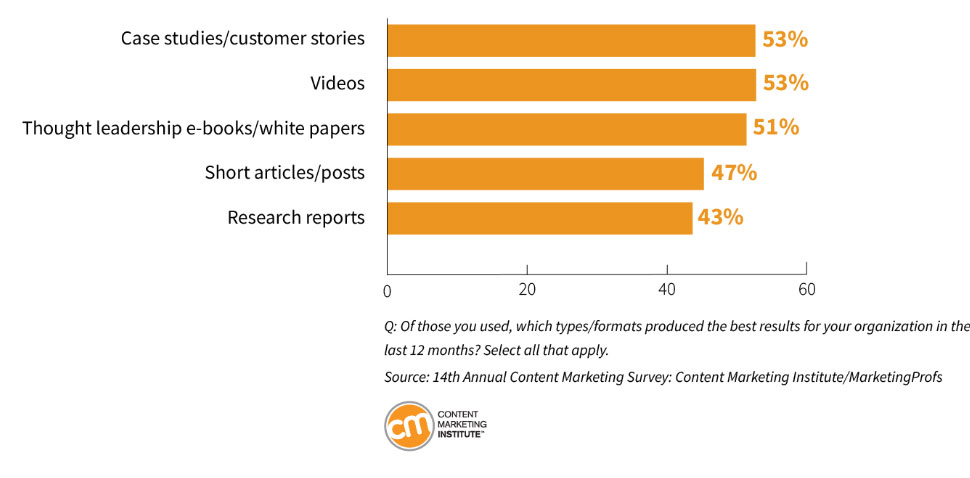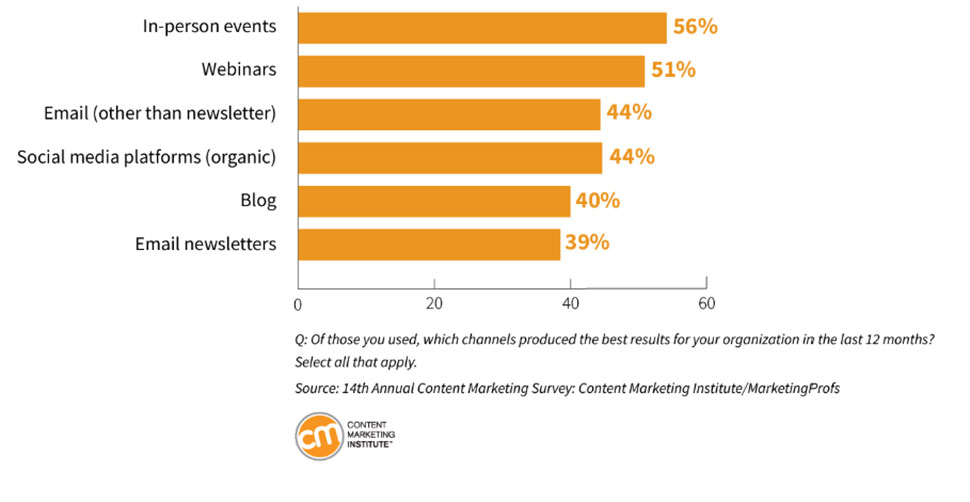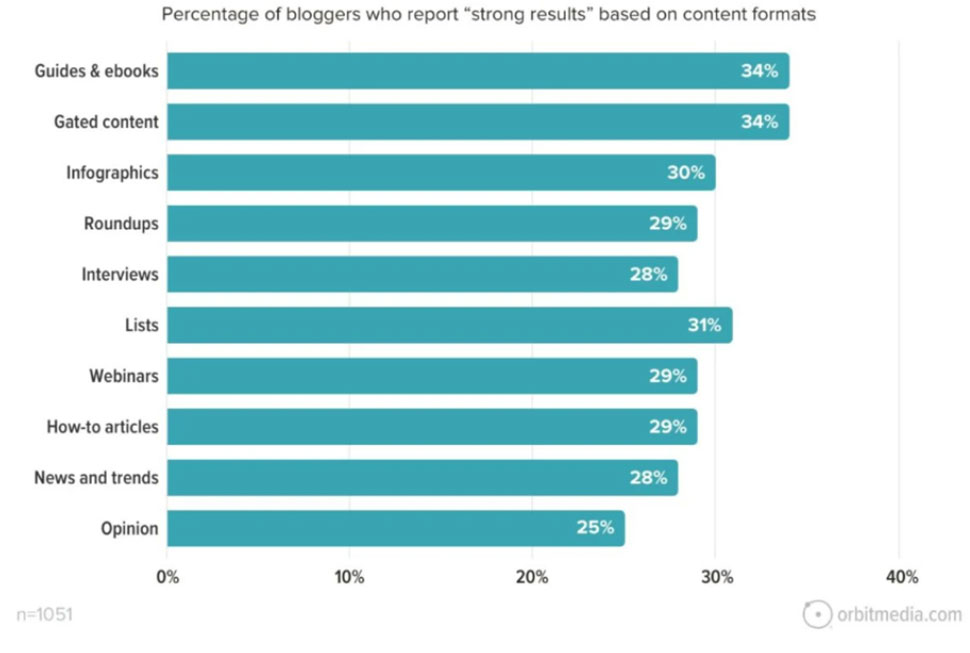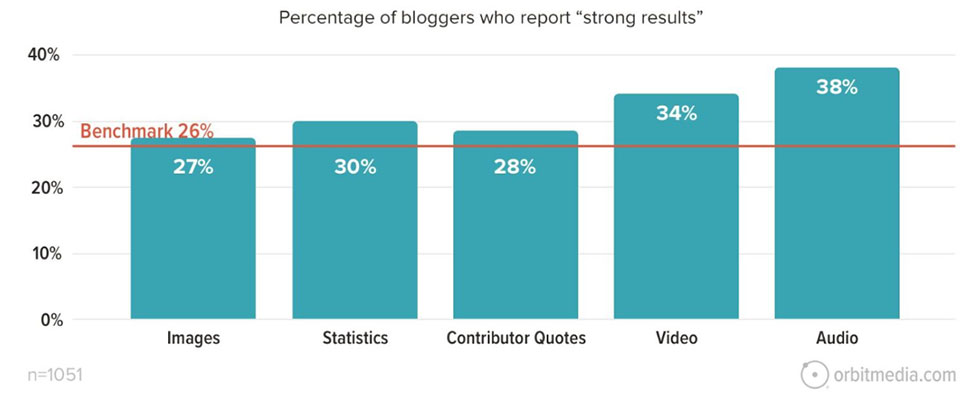In any relationship, romantic or otherwise, you usually establish trust when both sides consistently prove they are as good as their word. The same applies to brands. Content marketing is a powerful tool to build trust—and ultimately, a relationship—with your audience, but you’ve got to earn it first. You do so by routinely offering them valuable and reliable content experiences.
To provide such experiences, you need to grasp and meet your audience’s wants and expectations. This isn’t an easy task because these wants are constantly changing, and content marketing, too, evolves with them.
In this blog, we share some of the trends in audience behaviour and content marketing so you can adapt your communication efforts to maintain your audience’s trust and build enduring relationships with them.
More precisely, we shed light on the evolving consumer behaviours, examine the most successful content formats and distribution channels, focusing on blogging, and touch on Search Engine Optimisation. Lastly, we dive into the impact of AI on content marketing and on the marketing profession.
Don’t have time to read the whole blog entry? Then watch our “Blog in 1 minute” video for a quick summary of its main points:
What your audience wants
When creating a content experience, you should always keep one element in mind: your audience. There may have been a time when brands could merely push their content (and agendas) and get away with it. But today, people require content experiences that provide solutions to their problems. They want companies to serve them, not the other way around.
That makes sense. Have you ever spent time with someone who constantly talks about themselves and how amazing they are? Nobody likes that. You don’t just want to listen to that person; you also want to be heard and be part of the conversation. So, understanding your audience’s evolving behaviours and needs is crucial. One such need is personalisation—or shall we say, hyper-personalisation? People want content experiences that resonate with, and feel tailored to, them. With data and AI tools, this is simpler than ever.
Think of social media platforms such as TikTok, or streaming platforms like Netflix: their algorithms personalise the feed over time. Websites that adjust to user preferences or chatbots that address specific queries are also good examples of how you can fuel your content strategy with hyper-personalisation.
To further personalise your content, try to use the second person (“you”, the audience) more often than the first person (“we”, the company) when writing. Addressing your audience directly, as we are doing now, increases your chances of getting their attention and will make them feel more included in the conversation.
You can also use interactive formats such as quizzes and polls, or simply ask questions. As the Content Marketing Institute (CMI) explains, this technique moves your audience from a passive position to an active one as they consider their answer, potentially leading them to interact with you.
It’s time for microcontent, authenticity, and community building
Another important shift is that people increasingly seek entertainment online, particularly on social media, while still craving meaningful information. To balance these needs, you should produce microcontent: brief, snappy and interesting content like short videos, social media stories and infographics.
That said, you need to make sure your microcontent (well, any content) follows another trend that isn’t all that new but is becoming more and more significant: people’s hunger for authenticity and genuine connections. So, it’s time for you to say goodbye to staged pictures and scripted jargon. Instead, embrace your brand’s distinct voice and values through authentic storytelling, giving your audience glimpses behind the scenes.
To establish a genuine connection with your audience, build a community around shared interests. Encourage dialogue and user-generated content, and engage with them by answering questions and replying to comments.
Adapting content to different preferences
Lastly, keep in mind that people prefer different formats and channels depending on their needs. For instance, some might grasp information better through listening while others prefer reading.
An easy solution is adding audio to your site or blog. This will make it more accessible and allow your readers to consume your content on the go. And there are videos, too. They, especially short-form ones, continue to rule, so include them whenever possible. For example, our “Blog in 1 minute” text-based videos provide a summary of our blog posts for those who don’t have time to read them. These are just a few trends you should consider to better meet your audience’s expectations, but there are more. Understanding how and where you can distribute your content effectively—that is, the format and channel—is as important.
How and where your audience wants great content
As we’ve seen, people prefer different content formats and channels, yet some stand out as more effective for marketers. In 2023, the Content Marketing Institute surveyed over one thousand business-to-business (B2B) marketers worldwide to determine which.
Regarding formats, respondents said they primarily use short articles/posts (94%), videos (84%), case studies/customer stories and long articles (71%). But when it comes to effectiveness, they highlighted case studies/customer stories and videos, followed by thought leadership e-books or white papers, and short articles.
Types of content that produce the best results for B2B marketers

As for channels, marketers mostly use social media platforms (90%), blogs (79%), email newsletters (73%) and email (66%) to distribute content. However, it’s events, webinars and email that produce the best results* for them. Social media platforms and blogs come next.
*We talk about results, keeping it vague, since the respondents and their goals are varied. The goals could range from generating new business to raising awareness or driving website traffic.
Distribution channels that produce the best results for B2B marketers

These results don’t mean you should only invest your resources in the formats and channels that are most effective. You still need to cater to your audience’s different tastes. But perhaps you should devote more time and effort to them if your goal is better results.
Also worth noting, people aren’t only using LinkedIn or reading blogs. They are present in and engage with brands across diverse channels and devices. Hence, it’s crucial that you ensure your content remains consistent, relevant, and tailored to each platform. Whether it’s websites or social media, you want to provide a seamless storytelling journey that captivates your audience wherever they may be.
We also noticed that respondents widely use long articles (71%), but it’s the short ones that are the most popular (94%) and most effective formats (47%). These numbers got us thinking whether we are doing it right since our blog posts tend to be long. Besides, while widely used, blogs don’t seem to be the most effective channels. This led us on a journey to understand the trends about blogging. Care to join us?
Bonus: Is blogging dead?
Industry leaders who participated in a studioID survey about content marketing predictions declared blog posts likely to be the least successful content format in 2024. In the CMI survey, 79% of respondents reported using blogs to distribute content, but only 40% said they were effective. Honestly, this information made us worry about our blog. However, in another study from the digital marketing agency Orbit Media, 80% of bloggers said that blogging drives strong results.
These different results make it difficult to reach a consensus, which is why we believe you shouldn’t be too quick to kill your blog. As Hubspot’s Erica Santiago points out, “blogging has been used for so long simply because it works.” Indeed, blogs are a great channel to build trust with your audience through your expert content. Still, there are a few trends that can help you raise your blogging game, based on what marketers answered in the Orbit Media study:
- Focus on quality over length, but don’t underestimate the latter. The study reveals the average blog post length is 1,427 words long (that’s the average of the ranges of all the responses). Interestingly, it also indicates that the longer the blog post, the more likely the blogger is to report “strong results”. Orbit Media stresses that this correlation consistently remains one of the strongest findings year after year in the study.
- The same applies to publishing frequency. Bloggers who publish between two and six times per week are 50% more likely to report strong results. Once again, the more effort you put in, the greater the rewards tend to be.
Note: If you are thinking that the secret to successful blogging is to frequently produce long, high-quality content, here’s a word of caution from the digital marketing agency: long-form content and high-frequency publishing are incompatible content strategies. So you need to find a balance.
- Create more long-form guides and listicles (lists). These are, according to Orbit Media’s study, the most effective blog post formats, followed by gated content.
Gated guides are effective content formats

Source: 10th Edition of the Annual Blogger Survey, Orbit Media
- Add value to your blog posts with visual content. Orbit Media’s study highlights that those who add many visuals and embed videos are far more likely to report success.
What elements in blog posts are driving results?

Source: 10th Edition of the Annual Blogger Survey, Orbit Media
These tips will hopefully help you, but there’s another ally—although you may not consider it yet as such—that can help you in your writing efforts: Artificial Intelligence (AI) writing assistants.
AI: a valuable partner, not your master
With the advent of Generative AI (GenAI), some were quick to prophesy the end of the content marketing industry. We (want to) believe that the situation isn’t all gloom and doom. We can’t predict how GenAI tools such as ChatGPT will evolve but, at least for now, they are rather “robotic” and bland. The human touch—that is, creativity—is clearly missing.
So, don’t fear GenAI. Rather, embrace it and experiment with it to figure out how you can make the most of it in your daily tasks. AI writing assistants can be your creative catalysts, helping you by sparking ideas, surmounting writer’s block, and customising content.
According to the Content Marketing Institute survey, that’s exactly how the majority of marketers are using generative AI tools. Among the 72% who employ these tools, around half use them for brainstorming new topics, while 45% use them for researching headlines and keywords and for writing drafts. These results are similar to Orbit Media’s survey, where 65% of bloggers say they use AI to varying degrees, but the most common use case is generating ideas (43%). Only 3% said they use it to write entire articles.
We have ourselves been experimenting with AI tools, using them in a marketing campaign to introduce the partners appointed in 2023. We also asked ChatGPT to help us with our 2023 summer reads.
B2B marketers use generative AI for various content tasks

GenAI tools can clearly help you in myriad ways. Sure, they will replace certain tasks of traditional marketing, but these are likely to be the dreary ones. Which means you will be able to be more efficient and focus on meaningful work. How great is that?
Still, this can be a lot to take in. Rest assured, though. While change might be the only constant in life and many aspects of content marketing will certainly evolve, its core principle will persist.
An anchor amidst contentquakes
New trends, audience demands and technologies may strike like earthquakes, shaking content marketing deeply and prompting you to continuously adapt your strategy. We hope our insights help you to do that.
However, we believe content marketing has one constant that will prevail regardless of any changes. That constant is content marketing’s core principle of creating the best and most authentic content experiences that align with your business goals and your audience’s needs.
Think of this constant as your strategy’s compass, guiding you through the abundance of available information, new developments and your finite resources. By strategically focusing on the content experiences that best serve your goals and your audience’s demands, you save time and can put more effort on quality, consistency, impact and results.
As you prioritise content that establishes your credibility, transparency, relevance and expertise, you will naturally become a trusted source of information (and entertainment) for your audience, laying the foundation for strong connections. After all, it’s these connections that foster enduring relationships with them, leading to loyalty.
What we think

New trends, audience demands and technologies may strike like earthquakes, shaking content marketing—and your strategy—deeply, but its core will remain untouched. It will always be about consistently creating the best and most authentic content experiences for your audience in line with your business goals. Keep this in mind and you will be able to forge a long-lasting relationship with them, leading to loyalty.
Carla Santos, Digital Communications Specialist, PwC Luxembourg

